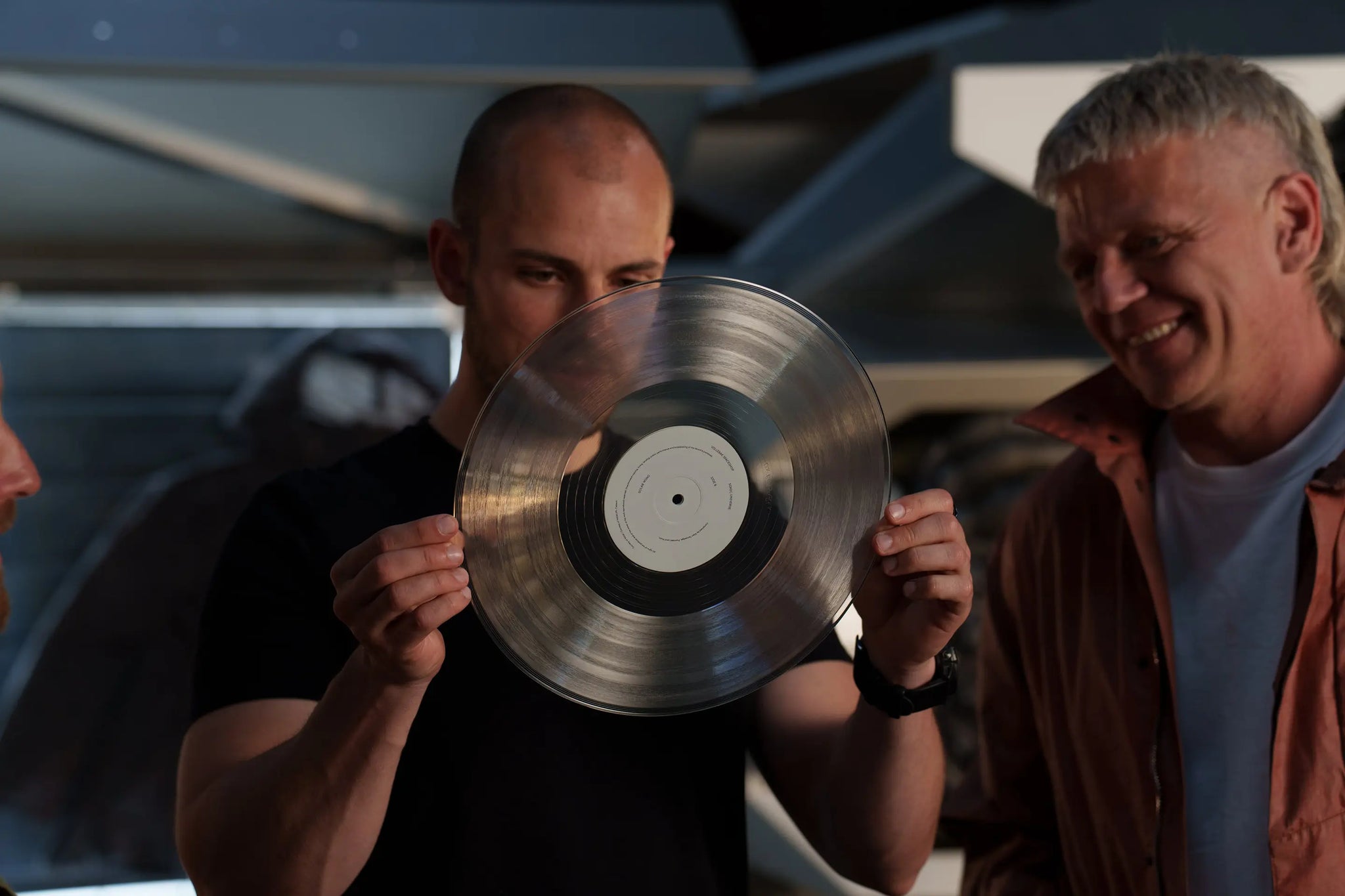
THE VOLLEBAK SPACESHOP PLAYS THE SOUNDS OF DEEP SPACE CAPTURED BY VOYAGER, CASSINI AND JUNO
Powered by eight Bang & Olufsen speakers, the Vollebak Spaceshop can produce around 120 decibels of richly thunderous sound. So with a little help from Voyager, Cassini, Juno, Caltech and the Jet Propulsion Laboratory, we built the soundtrack of the universe to test that out.
For most of human history, space has been silent. Sound needs particles to push against. But space is mostly empty. There’s no medium for sound to travel through.
But while cosmic happenings don’t create sounds, they do make waves – electromagnetic, gravitational, and plasma oscillations that can be translated into sound.
Pulsars – ultra-dense collapsed stars that spin like lighthouses – emit beams of radio waves so precisely timed that they rival atomic clocks.
Scientists at NASA, the European Space Agency, and other research bodies have developed ways to capture space sound using a process called data sonification.
Magnetometers onboard spacecraft like Voyager, Cassini, and Juno measure fluctuations in magnetic fields, while plasma wave instruments detect charged particles in motion.
These instruments pick up data from events like solar winds slamming into planetary magnetospheres.
Once captured, these data streams, measured in frequencies that are way above and below what humans can hear, are digitally shifted into the human hearing range.
That’s how we get to hear the eerie harmonics of Saturn’s rings or the sounds of two black holes merging – a signal so faint it moved the mirrors of Caltech’s LIGO (Laser Interferometer Gravitational-Wave Observatory) less than a thousandth of the width of a proton but still registered as a low chirp.
Some of the most iconic recordings, such the Voyager plasma wave audio from Jupiter and Uranus, are effectively space weather reports in audio form.
And while the cosmos doesn’t make audible sound, it does occasionally make ‘infrasound’, ultra-low frequency noise far outside the range of human hearing. The Perseus cluster of galaxies has a super-massive black hole at its core which ‘burps’ into ambient gas, creating actual sound waves which have been registered as a B-flat, 57 octaves below a middle C.
Closer to home, the InSight lander recorded vibrations caused by Martian winds, with some audio signals around 10 Hz, below the typical human hearing threshold of about 20 Hz.
To make these sounds audible to humans, NASA sped up the recordings by a factor of 100, raising the pitch by two octaves.
The universe has always been talking to us, we just had to build the instruments to listen. And the soundtrack we’ve created is a celebration of all that long-unheard cosmic noise.
The record is pressed on vinyl. But we’ve also uploaded it to SoundCloud in case you don’t have a turntable in your spaceship.

